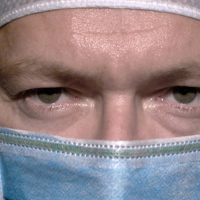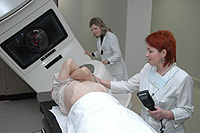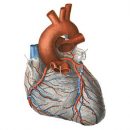How to get rid of feuhromocytoma? That is «Gold standard» Treatment of this ailment? Answers to these questions you will learn from this article.
Content
Feochromocytoma is a tumor, the appearance of which is accompanied by the pathological release of nor-adrenaline and adrenaline. About 90% by feochromocyte are located in the adrenal gland; 10% can be located outside the adrenal gland.
The disease is mainly developing in adults of middle-aged people, however, 10% of cases fall on children who are most often multiple and are located outside the adrenal gland.
It is with a peochromocytoma that is associated with the so-called «10% rule». This rule says that 10% feochromocyte:
- Located outside the adrenal gland;
- malignant;
- bilateral;
- develop in children.
Modern methods of fauchromocytoma
 Patients with farmocyte radically able to help only the operational way. Operations on the feochromocytoma of adrenal and non-voluntary localization began to be performed since 1926. Arterial hypertension is amenable to treatment with a surgical operation in those few cases when its cause is a feuhromocytoma.
Patients with farmocyte radically able to help only the operational way. Operations on the feochromocytoma of adrenal and non-voluntary localization began to be performed since 1926. Arterial hypertension is amenable to treatment with a surgical operation in those few cases when its cause is a feuhromocytoma.
The operation can be carried out as open access (with the cut of the front abdominal wall or lateral cut) or laparoscopic pathway (several small - up to 2 cm - cuts through which the optical tube entitled is introduced «Laparoscope» and tools). What way the operation will be carried out, solved in each case at the attending surgeon.
The first laparoscopic adrenalctomy (removal of the adrenal gland with the help of laparoscopic tools) at the feochromocytime was performed in 1992. Although laparoscopic tumor removal was associated with a large number of complications than an open operation, laparoscopic adrenalectomy has become the standard of surgical treatment of small tumors of the screw layer of adrenal glands.
The appearance of laparoscopic adrenalctomy as a method for treating feochromocytoma led to the need to revise other types of operations and their comparative assessment in order to choose approaches to surgical treatment of feochromocytoma individually for each patient. Studies were conducted in which such factors as the history of the patient's disease were taken into account, clinical manifestations (symptoms) of disease, tumor localization, preoperative preparation methods, the duration of the operation, the volume of blood loss during the operation, the presence of complications and the duration of stay in the hospital. A comparative assessment of operations conducted by open and laparoscopic access.
In patients with large-sized tumors, if the surgeon is not sure to complete the laparoscopically, the operation is translated into open access. That is, the initial operation is carried out laparoscopically, but the likelihood of transition to an open operation is taken into account if necessary, that is, the execution of a large section. With inclinary localization of the tumor, the operation is performed only by open access.
Laparoscopic adrenalectomy - the preferred method of surgical treatment of feochromocytoma (currently considered «Gold standard»). With laparoscopic adrenalctomy, the time of the patient in the hospital is reduced. Overall itself occupies as much or even a few more time than open, but accompanied by significantly less blood loss. Of course, the laparoscopic operation is a rather technically dangerous procedure, since laparoscopically sufficiently highlight the adrenal gland from the surrounding tissues, however, the appearance of increasingly perfect laparoscopes, as well as the operation in the patient's position on the side allows the surgeon to see the vascular network of adrenal gland and, thus perform Relatively safe laparoscopic adrenaliactomy.
Risks associated with performing adrenal operations do not increase during its laparoscopic method, if the procedure conducts an experimental team of doctors, consisting of their surgeon, endocrinologist and anesthesiologist. In any case, the decision to perform the operation in one way or another should be accepted individually.









